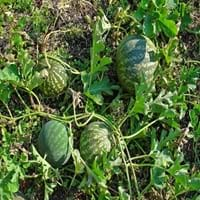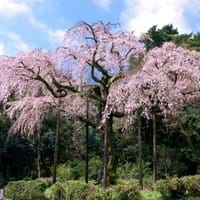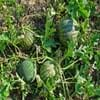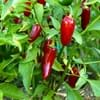Life Span
Annual
Perennial
Type
Vegetable
Flowering Plants, Fruits, Trees
Origin
Hybrid origin, Africa, Southern Africa
Anatolia, Asia, Europe, Iran, Maghreb, Morocco, Norway, The Hiamalayas
Types
Not Available
Flowering Cherries, Sour Cherries, Sand Cherries, Sweet Cherries, Capulin Cherries
Number of Varieties
Not Available
Habitat
along watercourse, Grassland
Forest edges, Wild, Woods
USDA Hardiness Zone
10-12
4-8
Sunset Zone
A3, H1, H2, 1a, 1b, 2a, 2b, 3a, 3b, 4, 5, 6, 7, 8, 9, 10, 11, 12, 13, 14, 15, 16, 17, 18, 19, 20, 21, 22, 23, 24
4, 5, 6, 7, 15, 16, 17
Habit
Prostrate/Trailing
Upright/Erect
Flower Color
Yellow
White
Flower Color Modifier
Bicolor
Not Available
Fruit Color
Green, Crimson, Dark Green
Red
Leaf Color in Spring
Light Green
Dark Green
Leaf Color in Summer
Green, Gray Green
Orange
Leaf Color in Fall
Green, Gray Green
Orange
Leaf Color in Winter
Not Available
Orange
Leaf Shape
Irregular
Oblong
Plant Season
Summer, Fall
Spring, Summer
Sunlight
Full Sun
Full Sun, Partial shade
Growth Rate
Very Fast
Medium
Type of Soil
Loam
Loamy, Well drained
The pH of Soil
Neutral
Slightly Acidic
Soil Drainage
Well drained
Average
Bloom Time
Indeterminate
Early Spring, Spring
Tolerances
Drought
Heat And Humidity, Not Available
Where to Plant?
Container, Ground
Ground
How to Plant?
Seedlings, Transplanting
Grafting, Seedlings, Transplanting
Plant Maintenance
High
Medium
Watering Requirements
Requires consistently moist soil, Requires regular watering, Requires watering in the growing season, Water Deeply
Never Over-water, Over-watering can cause leaf problems or root diseases, Prefer drip-irrigation instead of Over-head watering, Water twice a day in the initial period
In Summer
Lots of watering
Lots of watering
In Spring
Moderate
Moderate
In Winter
Average Water
Average Water
Soil pH
Neutral
Slightly Acidic
Soil Type
Loam
Loamy, Well drained
Soil Drainage Capacity
Well drained
Average
Sun Exposure
Full Sun
Full Sun, Partial shade
Pruning
Remove damaged leaves, Remove dead leaves, Remove dead or diseased plant parts
Don't prune in the fall, Prune if you want to improve plant shape, Prune in late winter, Remove dead or diseased plant parts, Remove deadheads
Fertilizers
fertilize in growing season, Nitrogen, Potassium
All-Purpose Liquid Fertilizer
Pests and Diseases
brown-spot needle blight, Cutworms, Downy mildew, Flea beetle, Flea Beetles, Fungal Diseases, fungus, Fusarium wilt, Powdery mildew, Red blotch
Aphids, Bacterial Canker, Black Knot, Brown Rot, Caterpillars
Plant Tolerance
Drought, Salt
Drought
Flower Petal Number
Single
Not Available
Foliage Texture
Coarse
Not Available
Foliage Sheen
Matte
Not Available
Attracts
Bees, Insects, Squirrels
Birds
Allergy
Stomach pain, Throat itching
Swelling in the face
Aesthetic Uses
Ground Cover
Showy Purposes
Beauty Benefits
Not Available
Not Available
Environmental Uses
Air purification, Food for animals, Food for birds, Food for insects, Versatility
Air purification
Medicinal Uses
High blood pressure, Nutrients
Arthritis, Gout, Kidney problems, Rheumatoid arthritis, Swelling
Part of Plant Used
Fruits
Flowers, Fruits
Other Uses
Used As Food, Used for its medicinal properties, Used in making beverages
Wood is used for making furniture
Used As Indoor Plant
No
No
Used As Outdoor Plant
Yes
Yes
Garden Design
Edible, Fruit / Fruit Tree, Herb / Vegetable, Tropical, Vine
Not Available
Botanical Name
CITRULLUS lanatus 'Crimson Sweet'
Prunus avium
Common Name
Crimson Sweet Watermelon, Watermelon
Cherry Tree
In Hindi
तरबूज़
चेरी का पेड़
In German
Wassermelone
Kirschbaum
In French
Citrullus lanatus
Cerisier
In Spanish
Citrullus lanatus
Cerezo
In Greek
καρπούζι
κερασιά
In Portuguese
Citrullus lanatus
árvore de cereja
In Polish
Citrullus lanatus
wiśniowe drzewo
In Latin
Citrullus lanatus
Cherry
Phylum
Embryophyta
Magnoliophyta
Class
Magnoliopsida
Magnoliopsida
Order
Cucurbitales
Rosales
Family
Cucurbitaceae
Rosaceae
Clade
Angiosperms, Eudicots, Rosids
Angiosperms, Eudicots, Rosids
Tribe
Benincaseae
Not Available
Subfamily
Cucurbitoideae
Not Available
Number of Species
Not Available
Not Available
Season and Care of Citrullus Lanatus and Cherry Tree
Season and care of Citrullus Lanatus and Cherry Tree is important to know. While considering everything about Citrullus Lanatus and Cherry Tree Care, growing season is an essential factor. Citrullus Lanatus season is Summer and Fall and Cherry Tree season is Summer and Fall. The type of soil for Citrullus Lanatus is Loam and for Cherry Tree is Loamy, Well drained while the PH of soil for Citrullus Lanatus is Neutral and for Cherry Tree is Slightly Acidic.
Citrullus Lanatus and Cherry Tree Physical Information
Citrullus Lanatus and Cherry Tree physical information is very important for comparison. Citrullus Lanatus height is 15.20 cm and width 240.00 cm whereas Cherry Tree height is 17.50 cm and width 17.50 cm. The color specification of Citrullus Lanatus and Cherry Tree are as follows:
Citrullus Lanatus flower color: Yellow
Citrullus Lanatus leaf color: Light Green
Cherry Tree flower color: White
- Cherry Tree leaf color: Dark Green
Care of Citrullus Lanatus and Cherry Tree
Care of Citrullus Lanatus and Cherry Tree include pruning, fertilizers, watering etc. Citrullus Lanatus pruning is done Remove damaged leaves, Remove dead leaves and Remove dead or diseased plant parts and Cherry Tree pruning is done Don't prune in the fall, Prune if you want to improve plant shape, Prune in late winter, Remove dead or diseased plant parts and Remove deadheads. In summer Citrullus Lanatus needs Lots of watering and in winter, it needs Average Water. Whereas, in summer Cherry Tree needs Lots of watering and in winter, it needs Average Water.





